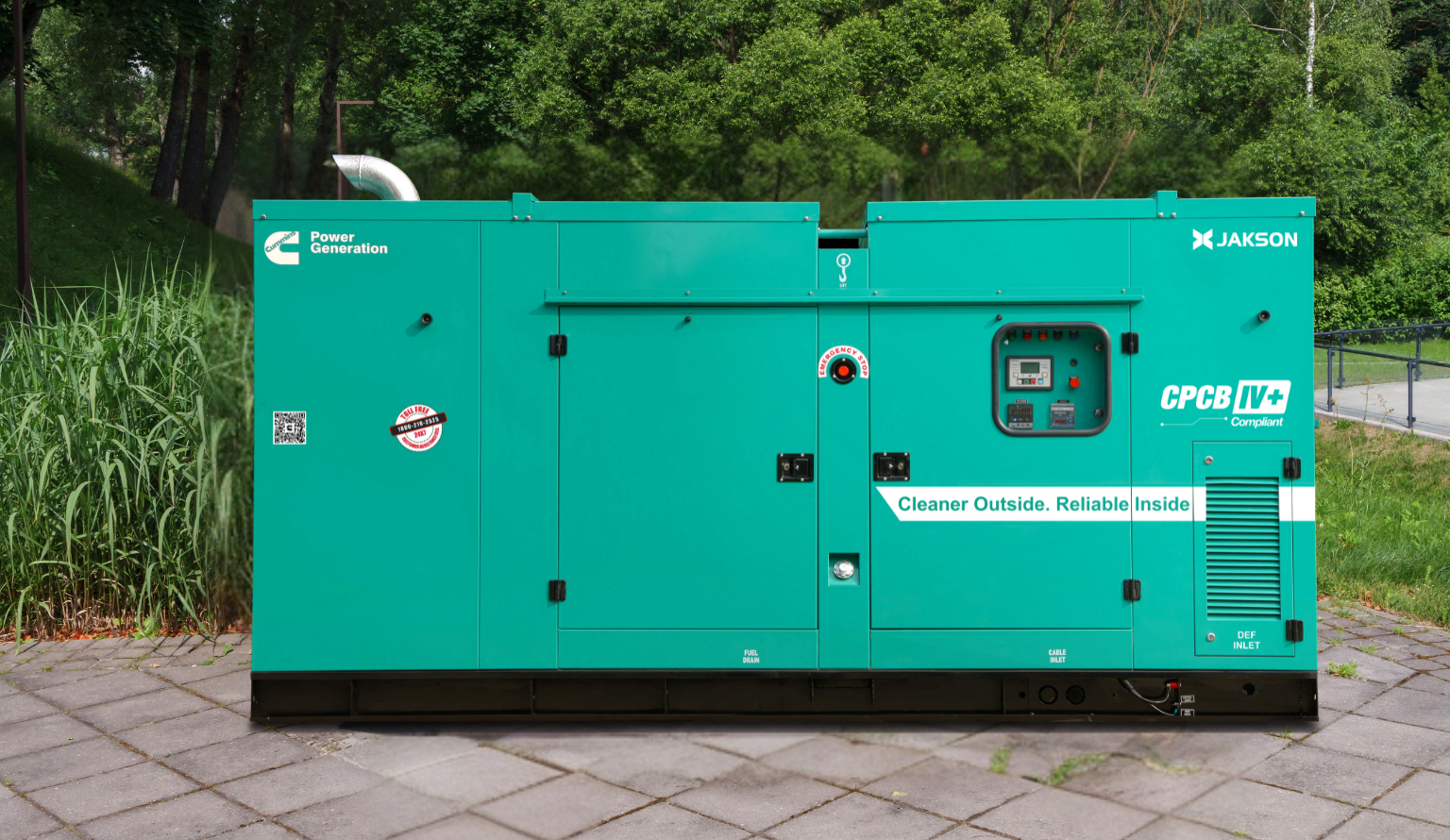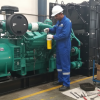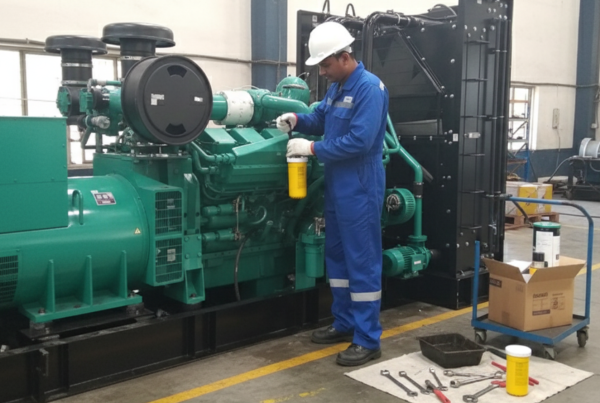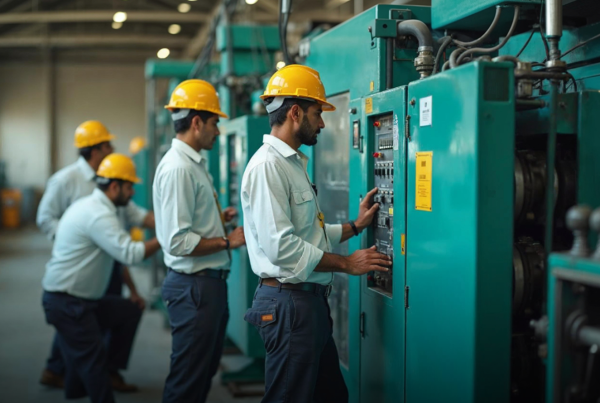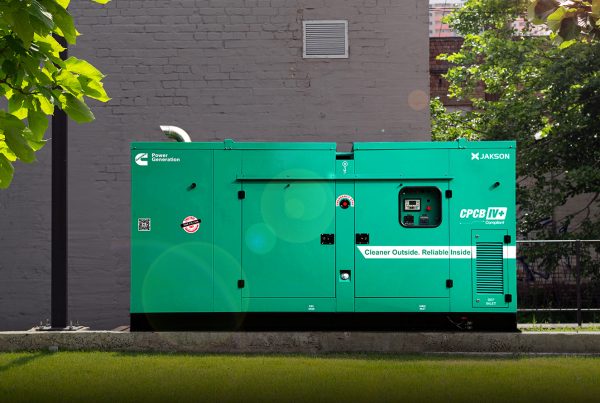Diesel generators are a trusted power source in industries, businesses, and homes, stepping in when the grid fails or in areas without reliable electricity. They convert diesel fuel into mechanical energy and then into electricity, powering everything from small appliances to heavy industrial machinery.
But how exactly does this process work? Let’s break it down step by step to understand the principle of a diesel generator.
The Essential Components of a Diesel Generator
To understand how it works, it’s important to examine its core parts. Each component plays a specific role in ensuring the diesel generator set runs smoothly:
- Diesel Engine: This is the powerhouse of the generator. It burns diesel fuel to create mechanical energy, setting the entire process in motion.
- Alternator: Connected to the engine, the alternator converts mechanical energy into electricity through electromagnetic induction.
- Fuel System: The fuel system stores and delivers diesel to the engine. Components like the fuel tank, fuel pump, and injectors ensure a consistent supply for smooth operation.
- Cooling System: As the engine runs, it generates heat. The cooling system prevents overheating and keeps the generator running efficiently.
- Lubrication System: Moving parts in the engine need lubrication to reduce wear and tear. This system ensures everything runs smoothly.
- Control Panel: The control panel acts as the generator’s control center. It monitors performance, displays key metrics, and allows operators to manage the diesel generator set functions.
- Exhaust System: This system safely removes gases produced during combustion, ensuring the generator operates cleanly and efficiently.
Each of these components works together to ensure the silent generator operates seamlessly.
How Diesel Generators Work: Step-by-step explanation
The operation of a diesel generator is straightforward but highly efficient. Here’s how it generates power:
- Step 1 – Air Intake and Compression
The process begins with the engine drawing in air through its intake valve. Then, the piston compresses this air, raising its temperature and pressure significantly. The compressed high-temperature air is essential to the principle of a diesel generator, as it ensures the fuel ignites efficiently in the next step.
- Step 2 – Fuel Injection
At the peak of compression, diesel fuel is injected into the combustion chamber. This happens at precisely the right moment to ensure optimal ignition. The generated heat ignites the diesel fuel instantly, creating a controlled explosion that releases energy in the form of expanding gases.
Precision is crucial—fuel must be injected at the right time and in the right amount to maximize efficiency and minimize emissions. This is key to the effective operation of any diesel generator set.
- Step 3 – Mechanical Energy Production
The explosion pushes the piston downward, generating mechanical energy. The piston’s movement rotates the crankshaft, which is the engine’s main mechanical output. This rotational energy powers the alternator in the silent generator.
- Step 4 – Electrical Energy Generation
The rotating crankshaft drives the alternator. Inside the alternator, a magnetic field interacts with coils of wire, producing electricity through electromagnetic induction. This conversion of energy lies at the core of the principle of a diesel generator.
- Step 5 – Power Distribution
The generated electricity is regulated by the control panel, ensuring it meets the required voltage and frequency. It is then distributed to power appliances, machines, or buildings. Some designs also store excess electricity in batteries for later use, especially in a silent generator designed for noise-sensitive environments.
This process ensures the diesel generator set transforms diesel fuel into dependable electricity, offering an efficient and reliable power source.
Jakson: Leading the Way with Efficient Distributed Energy Solutions
At Jakson, we take pride in being a leader in the diesel generator industry, offering a comprehensive range of reliable and efficient solutions from 7.5 kVA to 3750 kVA. Backed by advanced manufacturing facilities and decades of expertise, we deliver fuel-efficient, low-emission, and robust diesel generator sets that cater to diverse energy needs across industrial, commercial, and residential sectors.
Our focus on innovation, customer satisfaction, and round-the-clock service ensures that we consistently set the benchmark for silent generator solutions, empowering businesses with uninterrupted power when it’s needed most.
Whether it’s reliable backup power for critical operations or a primary power source for remote locations, Jakson diesel generators deliver exceptional performance and efficiency.
FAQ:
What are the advantages of using a diesel generator?
Diesel generators are more fuel-efficient and durable compared to petrol generators, making them more suitable for long-term or heavy-duty use.
Where are diesel generators commonly used?
They are widely used in industries, construction sites, hospitals, data centers, and residential areas for backup or continuous power supply.
What is the difference between a diesel generator and a petrol generator?
Diesel generators are more fuel-efficient and durable compared to petrol generators, making them more suitable for long-term or heavy-duty use.
Can a diesel generator be used for home backup power?
Yes, diesel generators can be used for homes, but the capacity should match your household’s power requirements.

